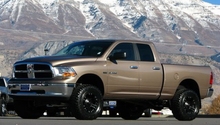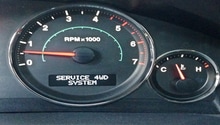Dodge Ram 2002-2008: 4WD General Information
In this article we'll cover the basics of your Ram's 4WD system and answer some common questions.
This article applies to the Dodge Ram (2002-2008).
There are several benefits of owning a 4WD truck. One benefit being the improved traction when driving in adverse weather conditions like snow and rain. If you already own a 4WD Dodge Ram or you're considering buying one, chances are you've come across some pretty confusing terminology associated with its off-road and towing features. To learn more about your Ram's special drivetrain and what you can do to keep it running longer, continue reading.
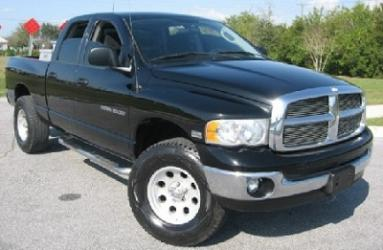
4WD
What is 4WD?
"4WD" stands for 4-wheel drive, which means that all four wheels are receiving power from the engine, transmission, and transfer case to provide the truck with better traction when conditions warrant it. 4WD should only be used in conditions where it's needed (such as snow, mud, ice, and heavy rain) because the front axles are locked and the front wheels can't rotate at different speeds when rolling. So on pavement, where gaining high traction isn't an issue, this can cause the CV (constant velocity) axles to bind and potentially break. However, when there is little traction on the road, the wheels can slip freely like they need to in order to prevent binding up.
What components are found on a 4WD truck and not in a 2WD truck?
When conditions don't warrant the use of 4WD, you should always use 2WD. When your truck is in 2WD, only the rear wheels are powering the truck, which allows for a better turning radius due to the front axles being unlocked. Also, 2WD leads to better fuel mileage since the motor is only working to move two wheels. There are four major components found on a 4WD truck that aren't on a 2WD truck.
- Transfer case: it acts like a secondary transmission, engaging and distributing power to the front wheels.
- Front driveshaft: it transports power from the transfer case to the front differential.
- Front differential: it is similar to the rear differential as it transfers power from the driveshaft to the axles.
- Front axle shafts: delivers power to the front wheels.
These components are the main reason why 4WD trucks generally suffer from lower gas mileage. Although you aren't using 4WD all the time, the additional weight is enough to make an impact on fuel economy.
Component Breakdown
Transfer Case
The transfer case is attached to the rear side of the transmission. Simply put, it acts like a second transmission and has its own set of gears inside. When in 2WD, the gears inside of the transfer case are unlocked so they can match the ratio of the transmission. However, when in 4WD, the transfer case can provide you with an additional gear range commonly known as "4-Low." The transfer case will have two output shafts—one to drive the rear driveshaft and one to drive the front driveshaft. In the 2002 to 2008 Dodge Rams, the front driveshaft will always be spinning regardless of being in 4WD because the front axles are unlocked at the differential. Other style transfer cases will instead unlock the front driveshaft.

Featured Video: Transfer Case Explained
Front Differential
The front differential acts in the same way as the rear differential. It contains a set of gears to transfer power from the driveshaft to the axles. The most important item to note is that if you ever change your rear gear ratio, you must also change the front ratio to match it. Running different gear ratios when using 4WD can cause massive damage to the entire driveline.
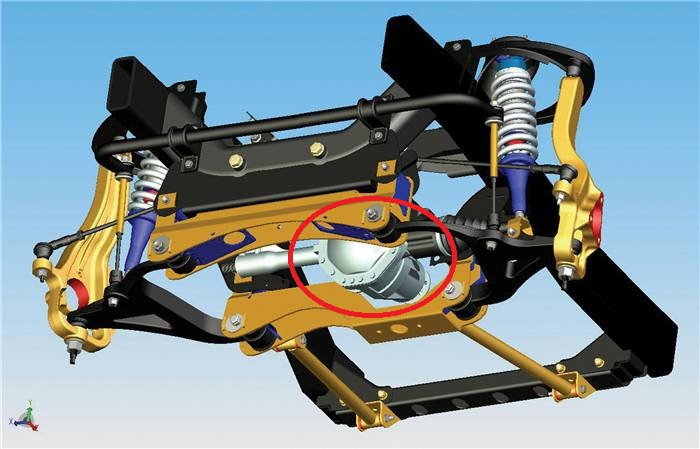
Featured Video: Differentials Explained
Front CV Axles
CV axles serve one purpose, and that is to transfer power from the front differential to the front wheels. In your Ram truck, once 4WD is engaged, the CV axles are locked via the axle actuator. This motor slides the axles into place so they catch on the gear and begin to spin with the front differential. When these are locked in, your turning radius will be limited due to the axles having limitations on how far they can move before binding.
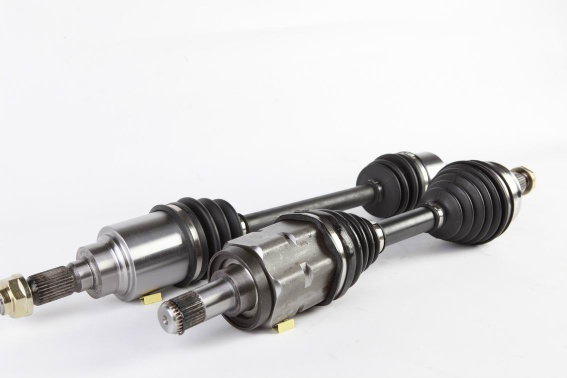
Front Axle Actuator
The front axle actuator is what engages the front axles when you switch into 4WD. Depending on the style, this is either done via electrical current or by providing/removing vacuum pressure from a vacuum line.
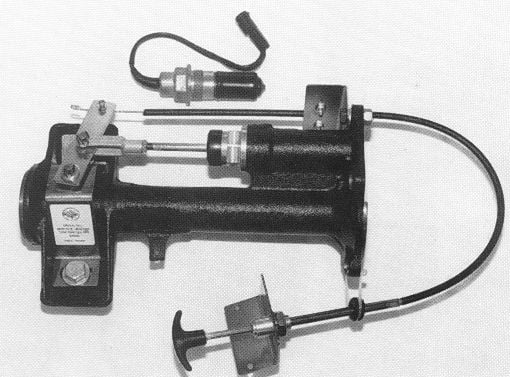
Scheduled Maintenance
- Oil: should be changed every 5-10k miles, depending on type of oil used and how much your truck is used for towing. Not towing and the use of synthetic oil will allow for a longer oil change interval.
- Tire rotations: should be done roughly every 3k miles, but at a minimum, they should be done on every oil change.
- Alignments: should be done every 15-20k miles, as well as when steering components are replaced or new tires are installed.
- Transmission fluid: should be changed first at 100k miles and every 50k miles afterward.
- Transfer case fluid: should be changed at least every 35k miles.
Common Questions
What's the difference between "4WD Auto" and "4WD Lock"?
"4WD Auto" operates similarly to AWD (all-wheel drive) in that it allows for some slippage when conditions don't fully warrant 4WD, such as on a slightly snow covered road. "4WD Lock" is true 4WD where there is no slippage allowed. This gear selection should be saved only for when conditions truly warrant its need, such as in deep snow or mud. Using 4WD Lock on dry pavement can cause major damage to the transfer case and axles.
What's the difference between "4WD" and "AWD"?
AWD sends power to opposing diagonal wheels (i.e., front-left and right-rear). This setup is good for daily driving where conditions don't warrant the use of 4WD, but more traction is still desired. 4WD simply sends an equal amount of power to all four wheels for use in bad conditions.
Common Issues
4WD Won't Engage
The first thing you'll want to check is the front axle actuator, since this is the most common problem. To check if it's receiving the proper voltage and power, you can unplug its electrical connection and try to re-engage the 4WD system. If the actuator is fine, inspect the CV axles and make sure no part of it is damaged and the teeth aren't stripped out. If either of these parts are damaged, you will need to replace it.
Gears Are Missing
Generally, you feel that your truck cannot find a gear. The issue is most likely involved with the transmission and not the transfer case. This is a common problem that is normally found around the transmission's 100k mile mark. However, you should also drain the transfer case fluid and inspect it for large metal shavings. If any are found, this is a sign the transfer case needs to be rebuilt or replaced.
Related Discussions and Site
- 4WD General Information - DodgeForum.com
- AWD and 4WD - DodgeForum.com
- 2WD vs AWD vs 4WD - ConsumerReports.org


